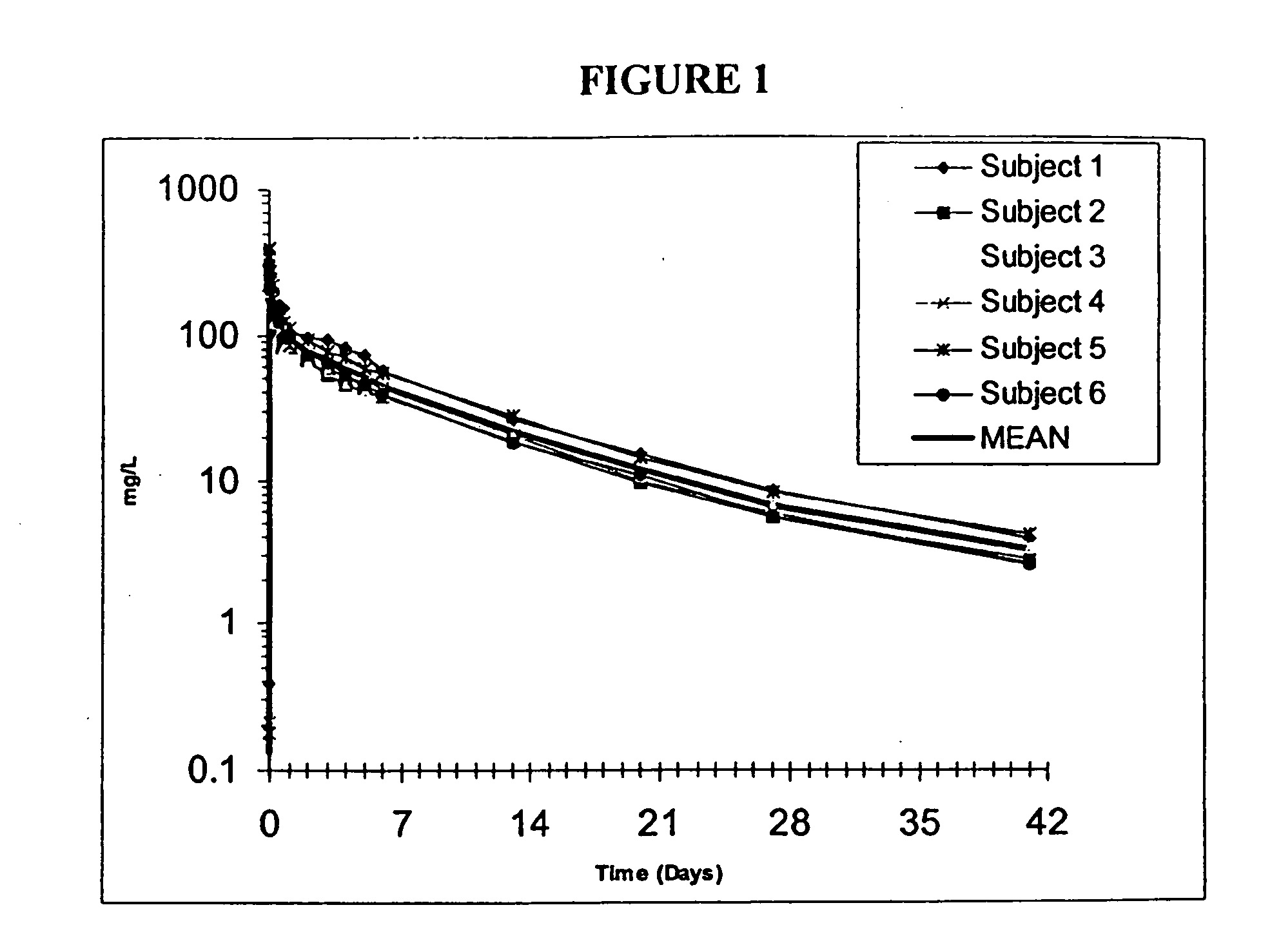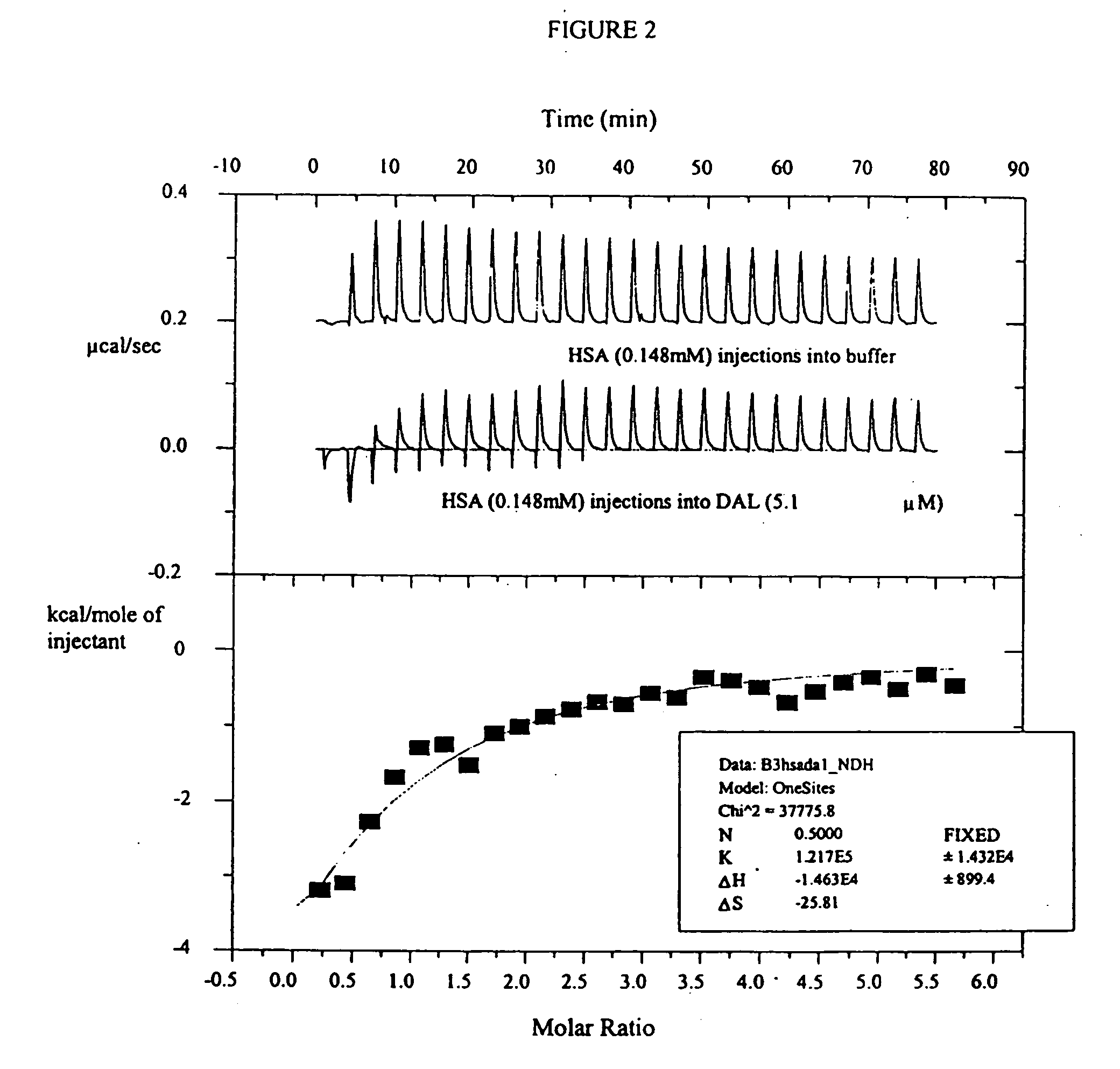Methods of administering dalbavancin for treatment of skin and soft tissue infections
a technology of dalbavancin and composition, applied in the field of dalbavancin composition, can solve the problems of life-threatening, limited treatment options for severe infections caused by some of these pathogens, and less frequent dosing, and achieve the effect of reducing adverse side effects
- Summary
- Abstract
- Description
- Claims
- Application Information
AI Technical Summary
Benefits of technology
Problems solved by technology
Method used
Image
Examples
example 1
Efficacy and Safety of once Weekly Dalbavancin in Deep Skin and Soft Tissue Infections
This randomized, controlled study evaluated the safety and efficacy of two dose regimens of dalbavancin. Adult patients with skin and soft tissue infections (SSTI) involving deep skin structures or requiring surgical intervention were randomized to three groups: Study arm 1 received 1100 mg of dalbavancin via intravenous injection (IV) on day 1; Study arm 2 received 1 g of dalbavancin IV on day 1 and 500 mg of dalbavancin IV on day 8; Study arm 3 received “standard of care.” Clinical and microbiological response and adverse events were assessed.
Populations for Analysis
There were 62 patients randomized into the study; all received at least one dose of study medication. Four study populations were evaluated for safety and efficacy and were defined as follows: The intent-to-treat (ITT) population included all patients who received at least one dose of study drug (all randomized study subjects)....
example 2
Pharmacokinetics and Renal Excretion of Dalbavancin in Healthy Subjects
The primary objectives of this study were to characterize the pharmacokinetics of dalbavancin and to calculate the extent of renal excretion in healthy subjects receiving a therapeutic dose of the drug. This was an open label, non-comparative, study.
Study Drug Treatment
Healthy male or female subjects between 18 and 65 years of age were administered a single 1000 mg IV dose of dalbavancin infused over 30 minutes.
Six subjects, one female and five male, were enrolled, received study medication, and completed all aspects of the study. Three subjects were Caucasian and three subjects were African-American. Mean age was 29.8 years (range 22 to 63). Mean height was 68.6 inches (range 63 to 75) and mean weight was 179.6 lbs (140 to 244).
Blood and urine (24-hr collections) were collected on study days 1, 2, 3, 4, 5, 6, 7, 14, 21, 28, and 42. Blood samples were drawn into heparinized tubes and ...
example 3
Protein Binding of Dalbavancin Using Isothermal Titration Microcalorimetry
Binding of dalbavancin to proteins was measured by isothermal titration microcalorimetry (ITC) in 20 mM phosphate, 150 mM NaCI, pH 7.4 at 25 and 37° C. using a Microcal VP-ITC instrument. In a typical experiment, 25×10 μl of protein (˜150 μM) was injected into a calorimeter cell containing dalbavancin solution (˜5 μM). Actual protein and dalbavancin concentrations were determined by measuring absorbence at 280 nm. Control experiments included injections of protein into buffer (in the absence of dalbavancin) to account for the heats of dilution of protein under identical conditions. For comparison, similar experiments with some necessary modifications were performed using teicoplanin.
Experiments with dalbavancin were conducted with each of the following proteins: human albumin; dog albumin; rat albumin; bovine albumin; and human α-glycoprotein. Teicoplanin was studied with human albumin and α-glycoprotein....
PUM
| Property | Measurement | Unit |
|---|---|---|
| resistance | aaaaa | aaaaa |
| length | aaaaa | aaaaa |
| plasma | aaaaa | aaaaa |
Abstract
Description
Claims
Application Information
 Login to View More
Login to View More - R&D
- Intellectual Property
- Life Sciences
- Materials
- Tech Scout
- Unparalleled Data Quality
- Higher Quality Content
- 60% Fewer Hallucinations
Browse by: Latest US Patents, China's latest patents, Technical Efficacy Thesaurus, Application Domain, Technology Topic, Popular Technical Reports.
© 2025 PatSnap. All rights reserved.Legal|Privacy policy|Modern Slavery Act Transparency Statement|Sitemap|About US| Contact US: help@patsnap.com



